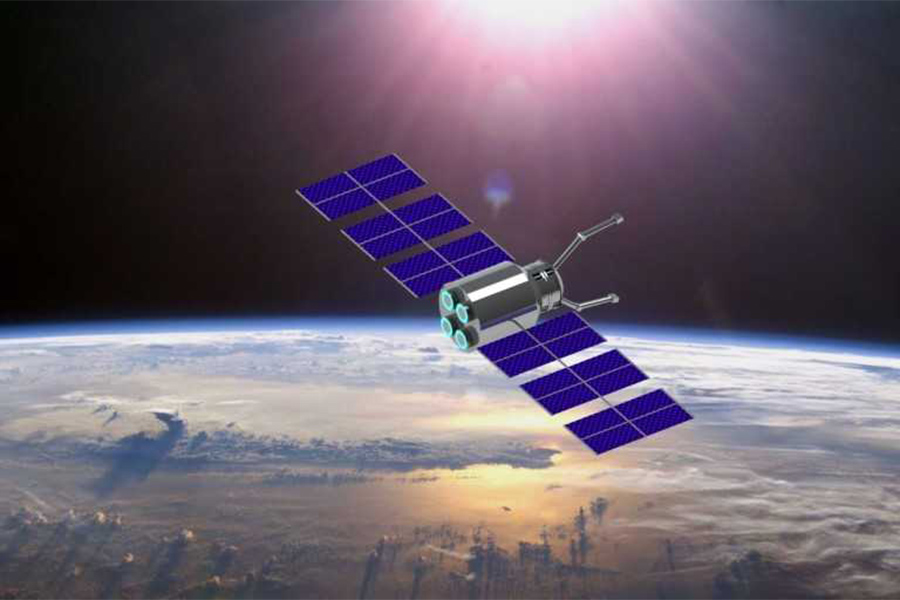SEDS team places third in satellite design competition

A Purdue team placed third in the Space and Satellite Professionals International (SSPI) Satellite Design competition and was invited to represent Purdue’s Students for the Exploration and Development of Space (SEDS) at the SpaceVision 2018 conference in San Diego next month.
AAE students Brian Campana and Tyler Mason were co-leads on the Purdue team that included AAE classmates Matthew Cirillo, Aidan Klupar, Kyle Alvarez, Jake Compton and Kolin Palmer.
SpaceVision is the annual national conference for SEDS. It’ll be held Nov. 1-3 in San Diego.
“It was nice being one of the top three teams,” says Campana, a senior in AAE. “Flying out to San Diego to go to this conference would be kind of a dream. You’d get to present something we worked a whole semester on that we’re pretty proud of, in front of people who are part of the professional organization, so it’d be awesome networking. It was a really cool offer.”
Every year, SEDS USA and SSPI team up to host an international satellite design competition. The recent competition required teams to envision a multi-purpose space tug designed to operate in Earth orbit and cislunar space by defining its service requirements, markets to be served, and technical capabilities, together with an estimation of deployment and operating costs. The final report was judged on the quality, design and rigor of the work presented and by the breadth of the work in terms of topics covered, according to SSPI’s website.
Purdue’s team designed the “Sisyphus Tug-Station System” (STSS) concept. The name was derived from Greek mythology, as Sisyphus was punished by the gods to endlessly roll a large boulder to the top of a hill. The team thought that constant act of pushing was a close analogy to their system, as the tug’s primary purpose is to move objects form one orbit to another or removing it from orbit entirely.
The system has three major components: the STSS Hub, STSS Tug, and the STSS modules. The Hub was designed as a docking and resupply location for the Tug. The station would allow for orbital refueling and act as a meeting point for cargo shuttling. There are two berthing modules at either end to support docking with the Tug and resupply capsules sent from Earth. Two Canadarm-esque arms coming off of the fuselage of the STSS Hub are there to grab onto STSS Modules, a claw system or any future expansions to the system, such as a human transport module.

The STSS Tug was designed to carry out mission objectives and could be outfitted with a module designed to move supply capsules to the proposed Lunar Orbital Platform-Gateway (LOP-G).
“Our mission was to implement current and near-future technology that interested us to develop a novel and feasible concept that satisfied and exceeded the requirements,” Mason says.
The team used STK software to model potentially extreme missions. The program used a generic ion propulsion engine. Campana says he thinks that caught the attention of the competition’s judges, as well as the team’s ideas of a refueling station and attempting cislunar missions.
“I thought the idea to use electric propulsion was very unique,” Campana says. “That probably earned us some positives and negatives. Because we made a pretty big assumption, but it was fun. I enjoyed myself. Electric propulsion is something me and Tyler are really interested in. So that connects back to the piece of our mission design.
“Then, I think, our mission to go cislunar was pretty different. That was actually an area that is most valuable for us because creating this for solely low-Earth orbit would have some big limitations in how many projects you can take on. If you’re in low-Earth orbit, you’re probably adjusting orbits of a communications satellite or more likely you’re probably targeting space junk. But we’ve tried that a couple times, and it hasn’t gone well of yet. So just the range of missions you can do in low-Earth orbit is fairly limited. If you say, ‘OK, we’re going to repair dead satellites with the tug.’ That’s fine to say. But realistically, how are you going to autonomously repair a satellite that’s very unique? So I think the Cislunar objective was probably that was something that was unique and also very utilitarian.”
